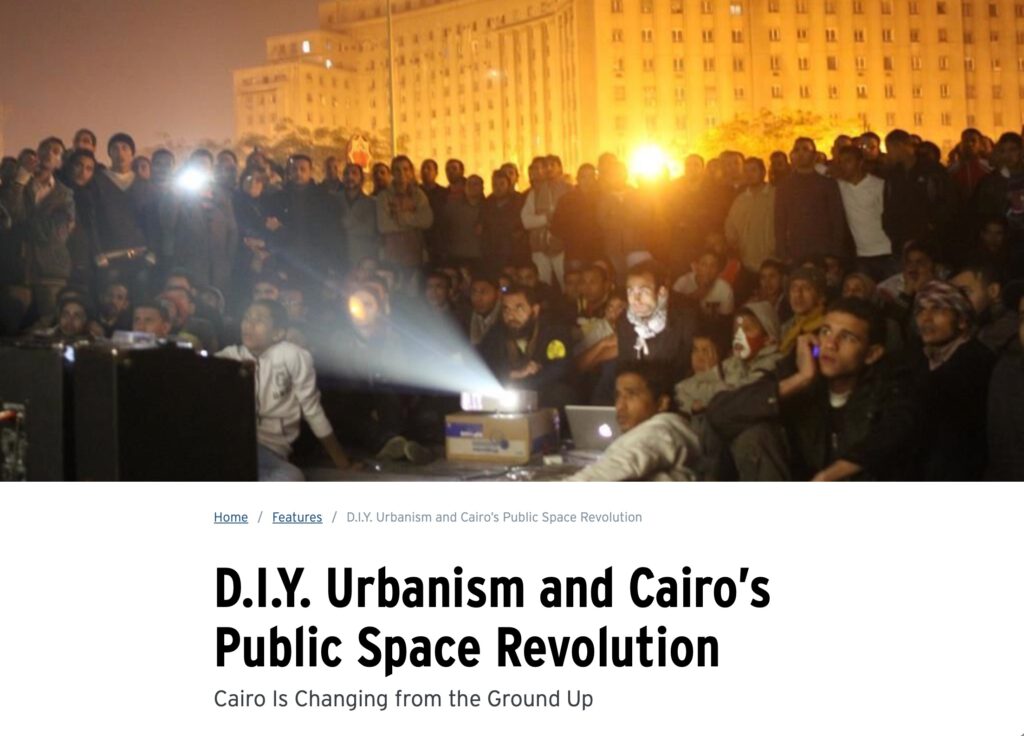I still occasionally come back to Cairo, in my mind or in virtual explorations online. Perusing the June edition of Le Monde Diplomatique, I stumbled upon an article by Sophie Pommier titled “Le Caire, ville entravée“, which loosely translates to “Cairo, a city in shackles“.
Sophie Pommier eloquently sheds light on the somber reality of Cairo’s dwindling political freedom since the rise of General Abdel Fattah Al-Sissi in 2013, and the growing gap between the rich and the poor in the city. This coincides with ambitious and grandiose projects aiming at reshaping and modernising the cityscape. However, beneath the veneer of progress lies an agenda driven by the privatisation and control of public spaces.
A poignant illustration of the issue at hand is the recently inaugurated “Mamsha Ahl Misr,” the “Walkway of the People of Egypt,” as it is euphemistically called and promoted on Instagram. It runs along the Nile Corniche, in close proximity to the extensive Maspero urban redevelopment project still under construction that has displaced thousands of people from an informal settlement in a central location.
The ”Walkway of the People of Egypt“ as a seemingly benign endeavour in fact establishes two levels of access to the river Nile: a first level at the narrow edge of the road accessible to all, for the popular masses, close to the cars stuck in the city’s eternal traffic jam, the zahma as it is called in colloquial Egyptian. And a second level of a sleek wooden promenade for the better off happy few, directly at the water’s edge, with posh restaurants and cafés, pontoons for private yachts and water taxi services.
”Mamsha is a one of a kind commercial lifestyle destination located on the bank of the River Nile. It features popular eateries, fine diners, casual eating outlets and cafés to satisfy all cravings. Mamsha is the newest landmark, bringing life back to downtown Cairo with its ongoing entertainment events and attractions to compliment the charisma of the Nile’s spirit.“ (Counsel Masters, operators of Mamsha Ahl Misr)
As Sophie Pommier states in her article, gone are the days that I very well remember when lovers met under the tree cover of the corniche, youths smoked cigarettes by the river, and people set in plastic chairs with friends, watching the feluccas go by with their thundering music.
The ”Walkway of the People of Egypt“ is in line with the plans to redesign the main squares and spaces in the city centre that were launched soon after the military coup of July 2013 in order to avoid that gathering in public places become sites of protest, as Tahrir Square was in 2011.
The new concept is a city in shackles, with invisible, but increasingly insurmountable walls. These walls segregate the compounds of the rich, the privatised neighbourhoods on the outskirts like Madinaty or New Cairo, where one can only get around by car, from the even more distant suburbs for the poor or the few remaining dilapidated informal housing areas in central Cairo.
Ten years ago, just months before the military coup in July 2013, there were still lofty aspirations for a public space revolution that would change Cairo from the ground.
Looking back even further, dating back over twenty years to 2002, at the peak of power of the Mubarak regime, expectations for public spaces were more modest, but nevertheless aspirational.
Twenty years ago, conquering public space in bumper cars
At that time, I had the privilege of working with a team of Egyptian and international colleagues on the upgrading of Manshiet Nasr, one the largest informal settlements in Cairo, situated near the historic centre at the foot of the Moqattam hills. As part of our efforts, we supported young women from the neighbourhood in organising and taking initiatives to improve their living conditions. Most of the young women had never left their neighbourhood and never seen the river Nile, just a few kilometres away. As part of our support, we arranged a visit to the Nile Corniche, including a felucca sail on the river.
In return, once they successfully registered as a women’s association, they invited us to an evening outing at a popular Nile-side restaurant that featured a small amusement park with bumper cars. The young women had never seen or experienced bumper cars before, and they eagerly requested driving lessons.
I still cherish the memories of these driving lessons by the riverside of the Nile as one of the most rewarding experiences in my professional career.
